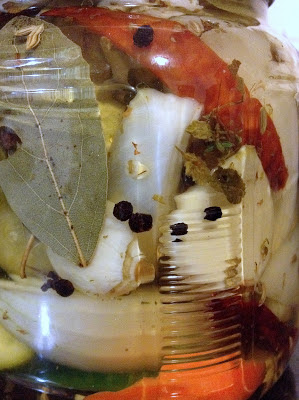It's no secret that I love dips... eating them and making them. I have a few standard, no-fail, go-to dips for parties or just having around at home for snacking. As most things I like to cook, the dips I make are seasonal. This is one of my favourite springtime dips! Beautiful colour, fresh tasting, herb-y...
- 1-1/2 lbs. (~1 kg) fava beans/broad beans, shelled (about 1-1/2 cups shelled beans)
- 3/4 - 1 tsp. salt, I used Himalayan pink salt
- 2 medium cloves garlic
- 1/2 tsp. crushed red pepper
- 1/4 tsp sugar, or less, or none
- 2 tsp. minced fresh mint leaves, or 1 tsp. dried
... and fat-free if you don't add olive oil. I often don't add oil because I find the fava beans creamy enough, and I always have olives around, which go well with the dip and bread/vegetables. Or I have a chunk of feta with it all. If I am not serving olives or feta with the dip, I do add the olive oil because the flavour of olives and fresh fava beans is heavenly!
Fresh Fava Bean Dip
Servings: makes 1-1/2 cups
- 1-1/2 lbs. (~1 kg) fava beans/broad beans, shelled (about 1-1/2 cups shelled beans)
- 3/4 - 1 tsp. salt, I used Himalayan pink salt
- 2 medium cloves garlic
- 1/2 tsp. crushed red pepper
- 1/4 tsp sugar, or less, or none
- 2 tsp. minced fresh mint leaves, or 1 tsp. dried
- 1 tsp. fresh dill, or 1/2 tsp. dried
- juice of 1 small lemon or lime
- juice of 1 small lemon or lime
- 1 tbsp. water or more, as needed to blend or process into the desired consistency
- 2 tbsp. extra virgin olive oil (optional - I don't usually add it)
Serve with:
Bread of any type, baked pita chips, roasted potatoes, skinny fries, raw carrots, zucchini, cucumbers, or as a side with baked/grilled fish
1. Boil enough water to submerge the fava beans up to 1 in.
Bread of any type, baked pita chips, roasted potatoes, skinny fries, raw carrots, zucchini, cucumbers, or as a side with baked/grilled fish
1. Boil enough water to submerge the fava beans up to 1 in.
2. Add the fava beans and cook for about 5 minutes.
3. Drain and rinse under cold water until cool. Or, drain and let the fava beans cool on their own for about 15 minutes.
4. Using your finger-tips, remove and discard the pale green outer skins and put the bright green fava beans in a bowl.
5. In a food processor or blender, add all the ingredients including the beans.
6. Process/blend to the desired consistency. I like it smooth, not coarse.
7. Refrigerate and remove from the fridge 30 minutes before serving to allow the dip to come to room temperature.
8. Really good the next day, when the flavours have melded!
Notes:
1. Since fava beans, mint, and dill are springtime produce, the flavours are exceptionally complementary. But you can use other herbs like cilantro/coriander or parsley. Or a combination of herbs of your choice. I definitely don't recommend rosemary or any other fall/winter herbs.
2. As always, adjust salt and red pepper to taste, or use freshly crushed black/white pepper.








